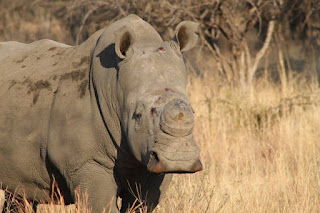South Africa, Swaziland and CITES: lifting the ban on illegal trade
The recent decision by Zuma’s South African government not to push for an internationally sanctioned market is, at best, controversial. Many conservationists, animal rights campaigners, and casual observers will agree that this decision is the right one to save the species; however, this opinion is, for the most part, fuelled by ignorance and misunderstanding. Maintaining the ban could spell death for South Africa’s rapidly declining rhino population, playing straight into the hands of the poaching syndicates who are sending them to extinction. While it may seem counterintuitive to lift a ban on rhino horn, it is actually considered by some to be one of the fastest, most effective ways to ensure rhinos are protected and valued.
As the current situation stands, rhino numbers are dropping rapidly, with over a thousand individuals killed by poachers alone each year. Private rhino owners, who own 20-25% of South Africa’s rhino population, are bleeding money – all funding goes towards protecting their animals; expenses range from vet bills to anti-poaching units to reserve maintenance. Those who wish to dehorn their rhinos need to consider the extra costs of hiring professionals to tranquilise the animals and monitor them as they go under, and of storing the horn once it is removed. Dehorning is an effective practice to protect the rhino, and is mostly harmless; however, it can be expensive and while the ban still stands, it is not a worthwhile investment for many owners. Those who do make this decision will end up with a stockpile of horn, worth thousands or millions of pounds, with which they can do nothing but wait.
This decision by the South African government forces rhino owners to pour more and more money into protecting animals which are, ultimately, economically worthless. Without legal trade on horns, rhinos have little to no economic value to business owners, who would rather invest money in more lucrative areas. To keep the ban in place is to ensure no worth is placed on the life of a rhino; if trade was legalised, rhinos could be farmed as a renewable source of keratin, giving them economic value.
Swaziland, on the other hand, have recently announced their intentions to propose a lift on the international trade of rhino horn. Here are LRRF, we fully support their movement, and pray they are successful. If they do achieve even a temporary lift on the international ban, it could open the door to other countries, such as South Africa and Namibia, rethinking their stances. Even if not, having just one country globally trading in rhino horn could provide much-needed data on the economics of it; since the ban has been in place since the ‘70s, there is very little data around to build an economic model on which countries can make informed decisions. Swaziland might provide a model for future trade policies – we can only hope for a positive outcome.
Until the international trade is legalised, private rhino owners and national reserves will continue to struggle alone against organised, well-funded global smuggling syndicates. Our rhinos will continue to be slaughtered and money will continue to be wasted on ineffective anti-poaching techniques. Rhino owners are running out of time and money, and lifting the ban is one of the only courses of action left. The ban hasn’t prevented the extinction of these animals yet; why should it do so in the future? It’s time to try something new.
#LiftTheBan



Comments
Post a Comment